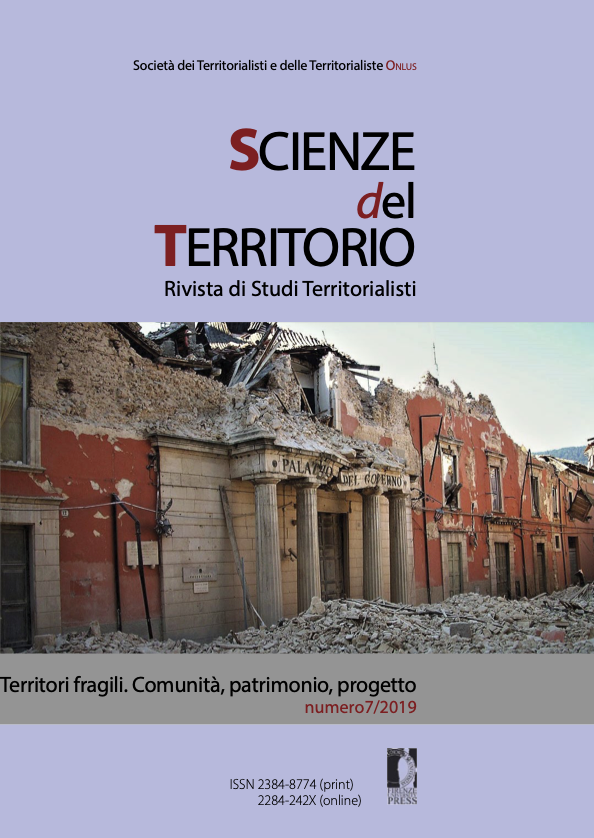Published 2019-12-27
Keywords
- contemporaneity,
- innovation,
- safety,
- civil economy,
- sustainability
How to Cite
Abstract
The impact caused by the series of seismic events that has shaken the central Apennines has condensed and accelerated dynamics, which, in the next fifteen-twenty years, would however have come to maturity along a sloping plane of progressive demographic, social and economic weakening of the border area among Marche, Umbria, Lazio and Abruzzi. For this reason the motto ‘where it was, as it was’, assuming that could go well for a few monuments and pieces of historical urban fabric, surely can not be the vision able to orient a reconstruction endowed with a social, economic and aesthetic value. We have the tragic opportunity, and the consequent responsibility, to make a leap into contemporaneity. This design implies a radical change of paradigm, a new way of seeing and thinking these areas of central Apennines and, more generally, the entire peninsula ridge. That mountains we today perceive as remote, isolated, marginal, internal, elusive, resilient and resistant, for centuries have been ‘a great urban space’ dotted with a network of important cities, rich and combative, all – beyond their physical size – with the dignity, self-perception and self-representation as real territorial capitals. ‘Where it was as it will be’ is the challenge of a reconstruction that is first of all a project of territorial regeneration, a laboratory of sustainability and creativity for a return to the future of the central Apennines, for its newfound ‘centrality’ and proximity.


